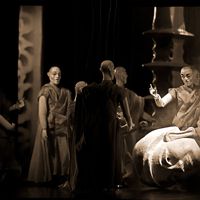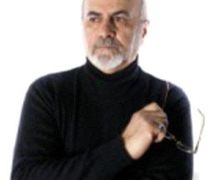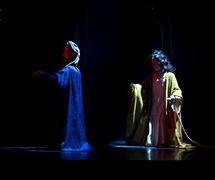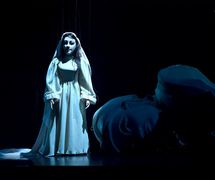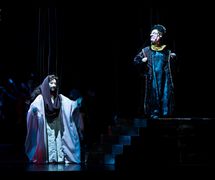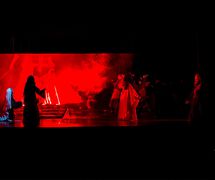Iranian cinema, theatre and puppetry director, professor-scholar, writer, translator, and master of puppetry. Besides his talent in writing and directing for cinema, theatre and puppet theatre, Behrooz Gharibpour is one of the most powerful cultural managers in Iran. He distinguished himself by inviting traditional puppeteers of kheimeh shab bazi to Tehran University when he was still a student there in 1970-1973, a useful acknowledgement for the traditional art. In 1973, he became an educator of children’s theatre and was the first actor in the puppet troupe directed by Oscar Batek, the Czech master who helped establish a Bachelor’s degree programme in Puppet Theatre at Tehran University. This experience led Gharibpour into a career of professional directing and development of puppet theatre in his country. He went to Italy to study at the Academy of Dramatic Art in Rome. But with the onset of the revolution, he returned to Iran in 1979.
As a writer and director, Behrooz Gharibpour was very active in television and with the Institute for Intellectual Development of Children and Young Adults (IIDCYA, in Persian: Kanoon-e Parvaresh-e Fekri-e Koodakan va Nojavanan). With the success of plays such as Kouroghlooye Chenli Bel and Kachal Kaftarbaz (The Bald Pigeon Keeper), the basis of a permanent theatre was established with Gharibpour as director from 1981 to 1990. His production, Green in Green (1984), was performed as shadow theatre and his Grandfather and the Radish (1985) used rod puppets.
In 1991, Gharibpour established the Bahman Cultural Center, transforming a former slaughterhouse into one of the most active cultural sites for artists’ activities. He repeated this transformation for other spaces, including, in 1999, converting the Iran Shahr Military Garrison into the Iranian Artists’ Forum (IRF), which he managed for eight years.
His puppet operas, performed with his company, Aran Puppet Theater Group, include Rostam and Sorab (2005) and Macbeth (2007). Operas based on the lives of the poets Rumi (Molavi, 2010) and Hafez Shirazi (Hafez, 2012) continued these operatic works along with Ashura, based on the ta‘ziyah (a passion play commemorating the martyrdom of Hussein, grandson of the Prophet Muhammad). The last, based on the Iranian Passion Play, has toured to Italy, France and Poland. Recent works have used European string puppets to realize the music and stories chosen, and often use the Ferdowsi Hall as a performance site. Gharibpour’s work has caused increased attention to string puppetry in his country and has won international acclaim.
As artist, professor, and cultural manager, Behrooz Gharibpour has been a major figure in Iran. He has published many essays, translations, and he has written many plays for the theatre as well as screenplays for cinema. He has directed numerous works. He served as vice-president and then president of Mobarak UNIMA and oversaw sections on Islamic and Asian entries of UNIMA International’s World Encyclopedia of Puppetry Arts. He is a multi-faceted artist whose impact has been immense.
(See Iran.)
Bibliography
- “Biography of Behrouz Gharibpour”. http://www.behroozgharibpour.com/Biography.aspx. Accessed 30 July 2012.
- “Behrooz Gharibpour”. http://www.behroozgharibpour.com/default.aspx. Accessed 11 March 2013.









